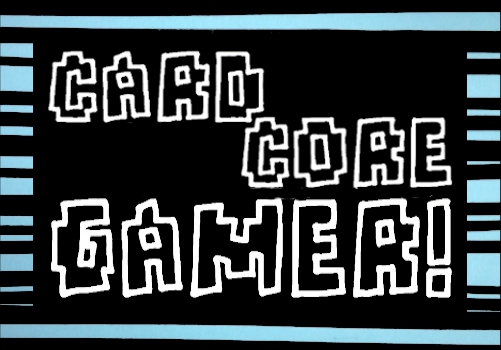Cardcore Gamer: How Appropriate Are Your Bits?
The tidal wave of plastic miniatures I spoke of back here shows no signs of breaking and while many are happily surfing atop it, I can’t help but question whether, like this surfing metaphor, game components could stand to be more appropriate.
One of the strongest lures that led me astray from the screen-absorption of video games was the inherently tactile, physical nature of table-top games. The components of a game can significantly affect a gameplay experience, and even become a defining part of the game itself. Publishers understand many players’ wont to embellish their games, and premium quality components are pretty commonplace now, but I’m interested in how well-suited they are for use in games.
Though not as thematically apt, or visually pleasing as, say, plastic gemstones, the origin of Splendor’s poker chips as a form of coinage conveys their purpose as the game’s currency; the chips’ practical, weighty physicality gives a feeling of value expressive of the gem-trading theme. They add so much to the experience of that game that I have read of more than one instance of someone handling the chips, even while playing the phone app. The rug-placement game Marrakech uses fabric strips to represent carpets in a market. Like Splendor, it’s a semi-abstract game, but while just as serviceable as card tiles, the tiny ‘carpets’ convey the game’s theme via tactile means. Recent title Abyss uses plastic pearls as its currency; the pearls are appropriate to its under-sea theme, and pleasant to look at, but have a tendency to roll, scatter, and attract wayward cat paws: they lack practicality. The use of hard plastic for the true-15mm scale miniatures in The Great War coupled with printed, wooden dice conjure up a memorably serious tone befitting its World War One setting which more elaborate, softer plastic figures and regular D6s could not. Even from these few examples it’s clear that theme can be expressed or impacted by different components and materials, nevertheless, the current trend seems to be toward realism in game components.
Especially among Kickstarted games, plastic miniatures are becoming the default ‘realistic’ component upgrade. Miniatures can add a striking visual presence to the board As a material, plastic is durable, capable of holding fine detail, and is a sympathetic material for more modern, or exaggerated themes, but plastic minis are usually cast in an unpainted block colour, often grey. Without an investment of time, skill, materials, and effort to gain the full effect, miniatures can negatively affect the practicality and theme of a game. Gears of War: The Board Game suffers from nigh-indistinguishable player miniatures, and some games (including one of my favourites) include coloured plastic bases to identify pieces, solving a problem which could have been avoided by a different choice of playing piece. Games with a more ‘Euro’ style have also moved toward realism, retaining familiar wooden pieces, but reshaping them from cubes and cylinders to simple forms of animals, buildings, or produce. This form of ‘realistic’ game piece reduces the abstraction of theme, but retains both it’s sympathetic material and functionality. Carcassonne is arguably the originator of this with its now-iconic humanoid Follower ‘Meeples’.
This blog post was sparked by playing Blood Rage – a surprisingly ‘Euro’ design, topped with copious amounts of plastic. I didn’t feel that miniatures added anything to the Norse mythological theme and questioned what I would use in their stead: For me, if a game is going to invoke the fury of battle, the end of the world, and Norse gods and monsters, let it be more classical, less Hollywood. Earthy materials, such as leather, wood, stone and steel should be present, the pieces similar to those in a Hnefatafl (bless you!) set. The components should have weight and purpose, and if anything, less polish.
Game components and the materials they are made of help to make games memorable. Having played with both the original wooden blocks, and the more modern tiles of Hive, the cool, smooth, satisfyingly ‘clacky’ bakelite pieces cemented the game’s identity in my mind. They have a weight similar to poker chips, or Chess pieces, which makes moves feel more decisive and ‘weighty’ too. I would love to see games designers considering the use of more diverse materials to tap our sensory memory, as long as they are appropriate to their game’s concept, aesthetic, and usability. The elephant in the room is, of course, the cost of such things, but with Kickstarted games regularly raising over $1,000,000 it seems that the possibilities are limitless.


